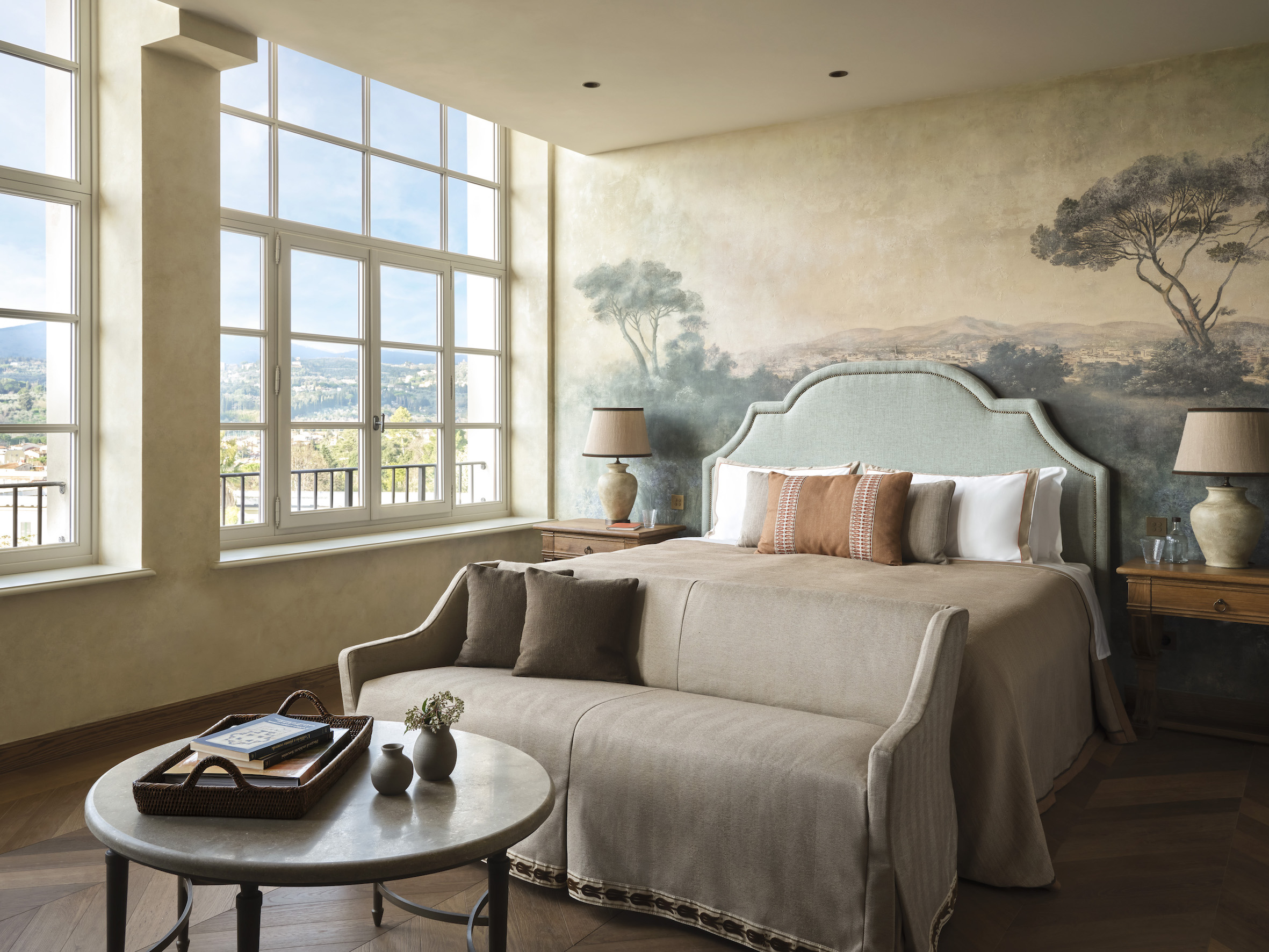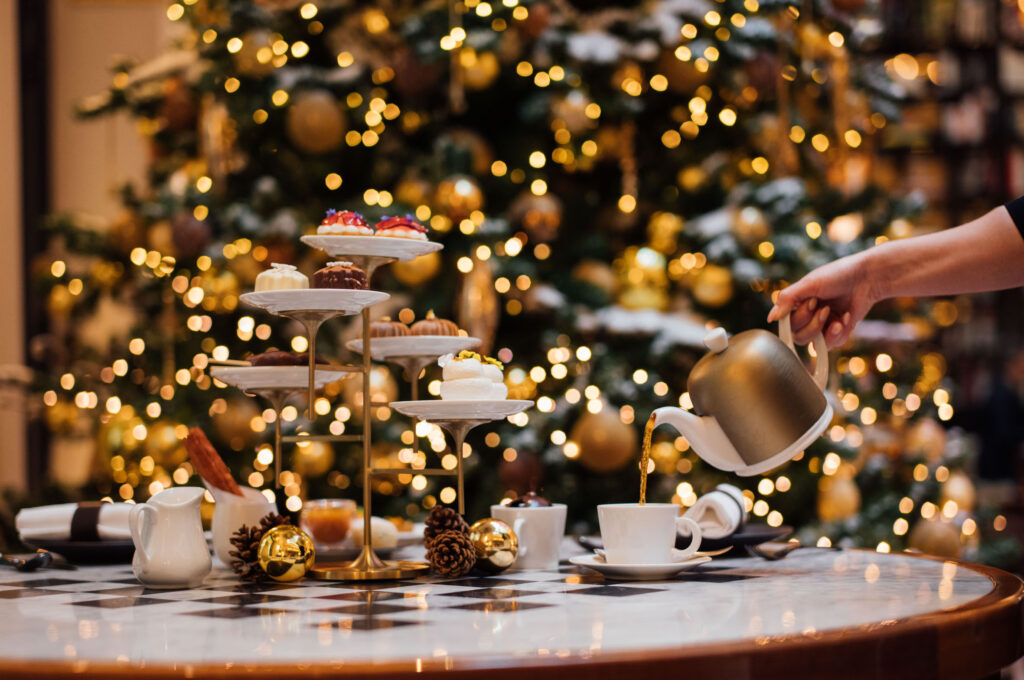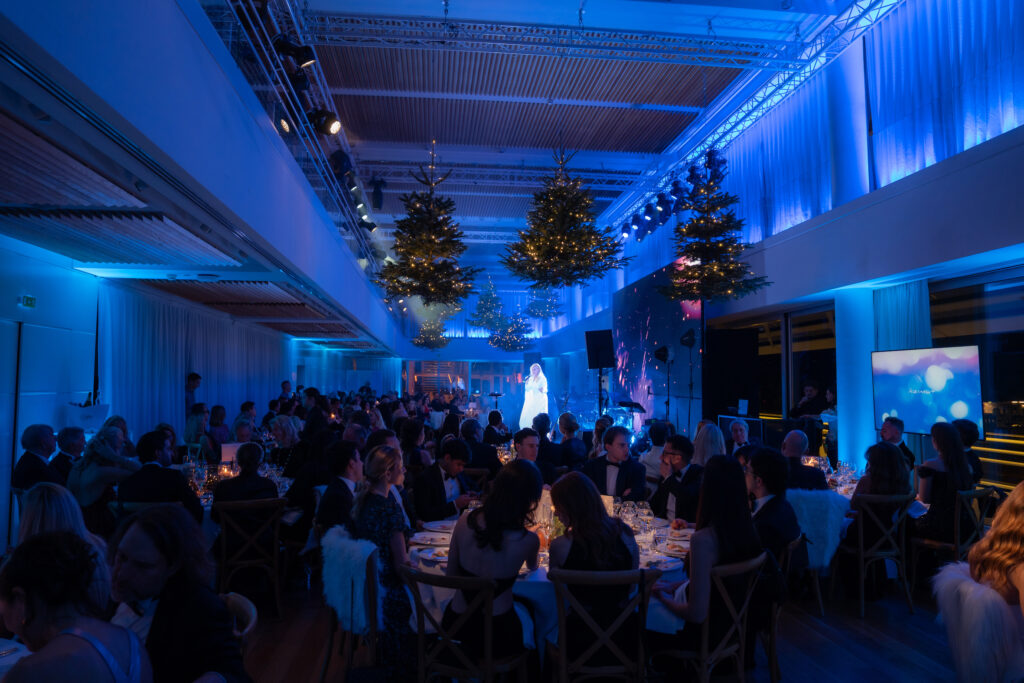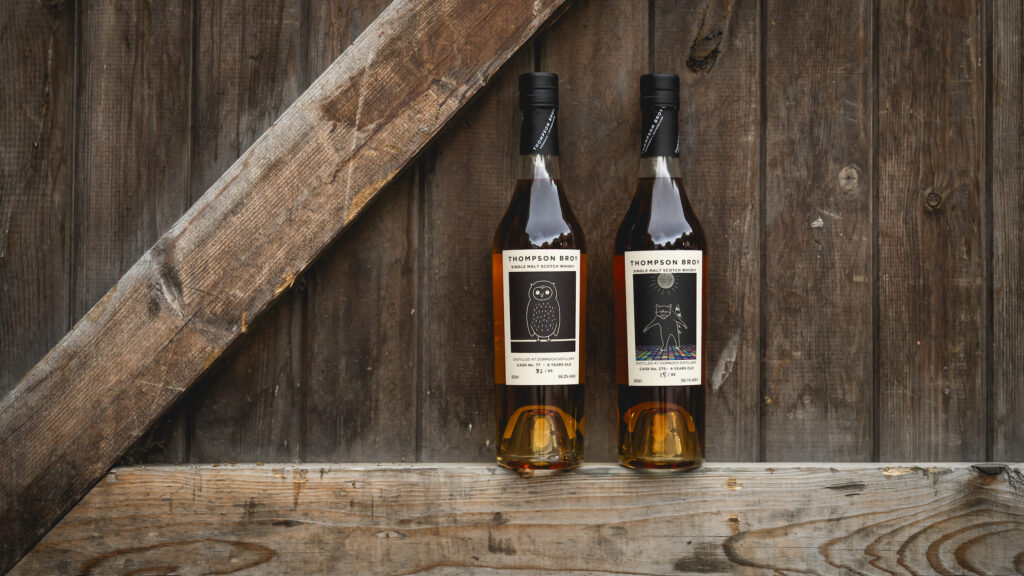Away from the throngs on Florence’s northern edge, Collegio alla Querce – an Auberge Collection hotel that opened in March – is a stunning addition to Italy’s already burgeoning hospitality portfolio.
Sometimes, the best hotels in the city are just outside of it. And this spacious gem, set a corkscrew thoroughfare away from the tourist hub, above the Le Cure neighbourhood in the city’s north – but within easy reach of the Uffizi Galleries, the Duomo, Ponte Vecchio and the other check-list staples – is the go-to choice for any crowd-averse visitor to Florence.
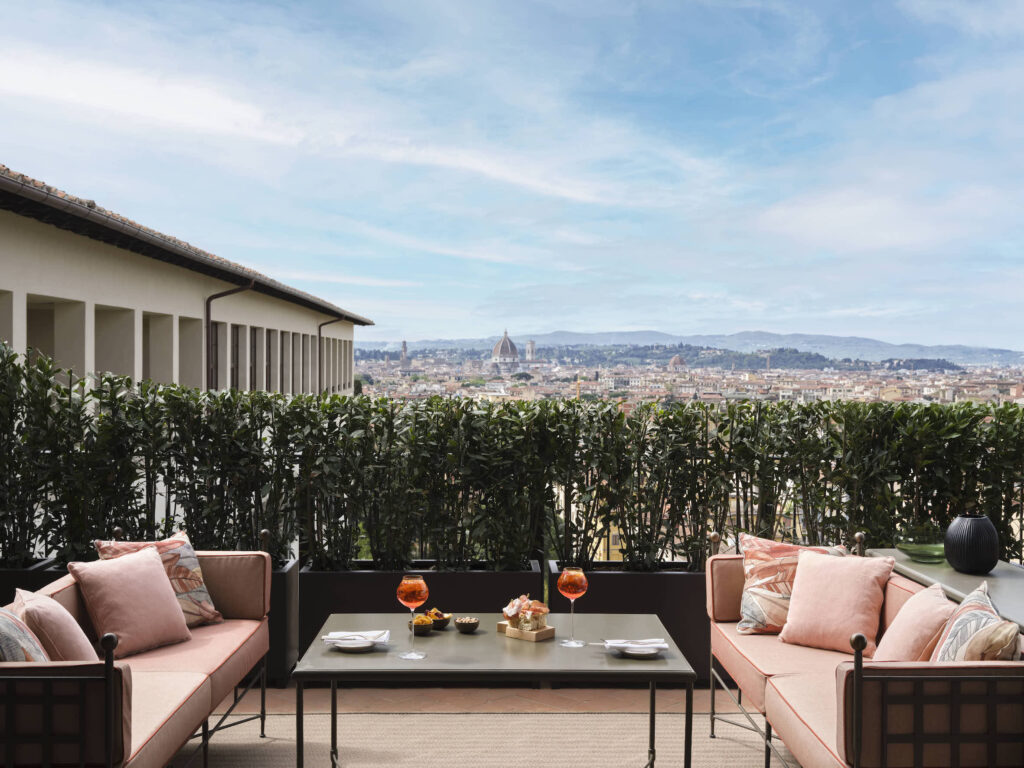
Part of the Auberge Resorts Collection, and set within a 16th-century property, Collegio alla Querce (as the name implies) has spent most of its life as an elite boarding school. It opened in March, after a four-year revamp which tackled the interplay between conservation, restoration and renovation: always tricky, in an ancient, storied metropolis. Original frescoes and coffered wood ceilings have been not just preserved but replenished, as have the chapel and theatre (which helps retail the building’s scholarly ambience), while sensitive structural upgrades were applied to many of the vast public spaces.
Esteva i Esteva, a Spanish, father-son architectural firm executed the makeover, with interiors (a kind of slick, pristine spin on the rustic Tuscan aesthetic, with hues which echo those very surrounds) carried out by the local Florentine studio ArchFlorence. Essentially, though, ArchFlorence’s task has been to provide a suitably unobtrusive backdrop for the owner Analjit Singh’s penchant for contemporary art.
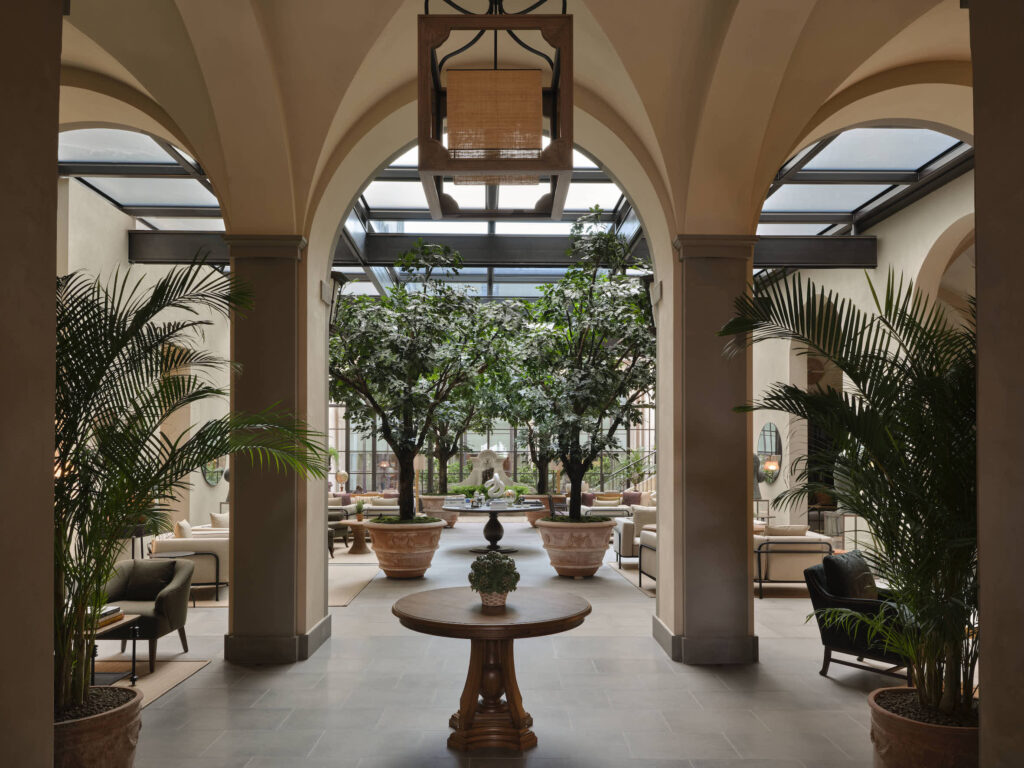
Like-minded art lovers could spend hours perusing the vast, lumen-bathed ‘Conservatorio’ (essentially an open courtyard, encased in glass during the makeover) and other ample public areas, so replete are they with mostly South African pieces, assembled and curated by the Everard Read gallery. Deborah Bell’s large-scale bronze sculptures and dry point etchings, Guy du Toit’s hare sculptures and Gerhard Marx’s mischievous works with maps are worth seeking out whilst exploring the hotel for the first time. The South African-Tuscan dichotomy continues outside, meanwhile, with the terraced, cypress-dotted gardens designed by the acclaimed Cape Town-based landscape designer, Franchesca Watson.
There are 83 keys in all, with all guest quarters boasting splendid views (either of Florence, or the Tuscan landscape), parquet wood floors, stand-alone baths, ceramics by Studio Ceramica Giusti and custom furniture made by Milan-based Paolo Castelli, which – in our suite’s case – mingle elegantly with hand-painted wallpaper depicting the celebrated surrounding countryside. Among the finer details all guest quarters boast are ultra-soft bedsheets by Rivolta & Carmignani (pillows and mattresses are by Dorelan), a powder room, toiletries by La Bottega and tasty pre-mixed bottled Negronis and moreish truffle chips in the minibar.
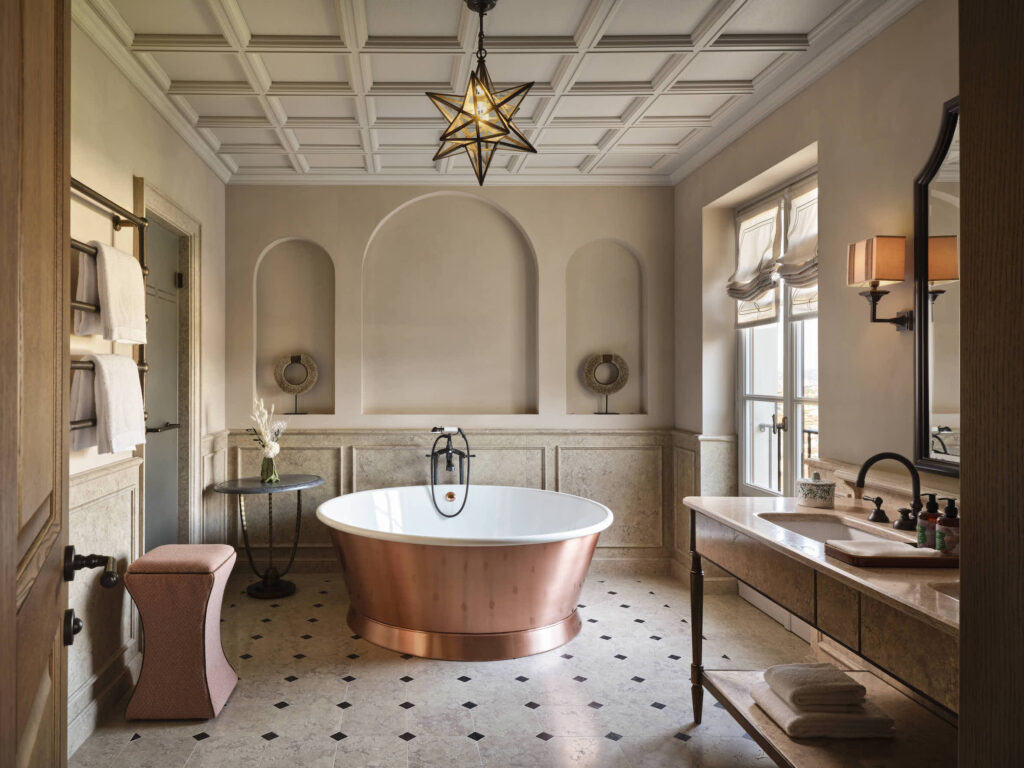
As for the choice picks, the Santa Maria del Fiore Suite (€6,800, or around HK$61,000), with its heritage-rich interiors, hand-painted walls and eye-catching artworks, is surely one of Italy’s most sybaritic hospitality hideouts. The ultimate eyebrow-hiker here, though, is the Penthouse La Quercia (€10,300, or around HK$92,300): 213 m² of opulence, with a 100 m² rooftop terrace, private wine cellar (curated with wine by Piedmont Barbaresco and Barolo specialists Gaja) and king-size wrought-iron canopy bed with views over the city.
Florence’s largest outdoor pool (at 35 meters) awaits in the grounds, whilst over at the Aelia spa, plunge pools and steam showers are on offer, as well as treatments which involve – over to the hotel – “nourishing infusions sourced from organic gardens and olive groves”. Yup, olive oil massages. Collegio alla Querce is also a pioneer when it comes to a new emerging trend in luxury travel: spa and wellness experiences becoming child/family-friendly. Yoga classes specially designed for kids aged 5 to 12 are on offer, as is a Tibetan-style sound bath workshop which can – and did, in our case – involve the whole family.]
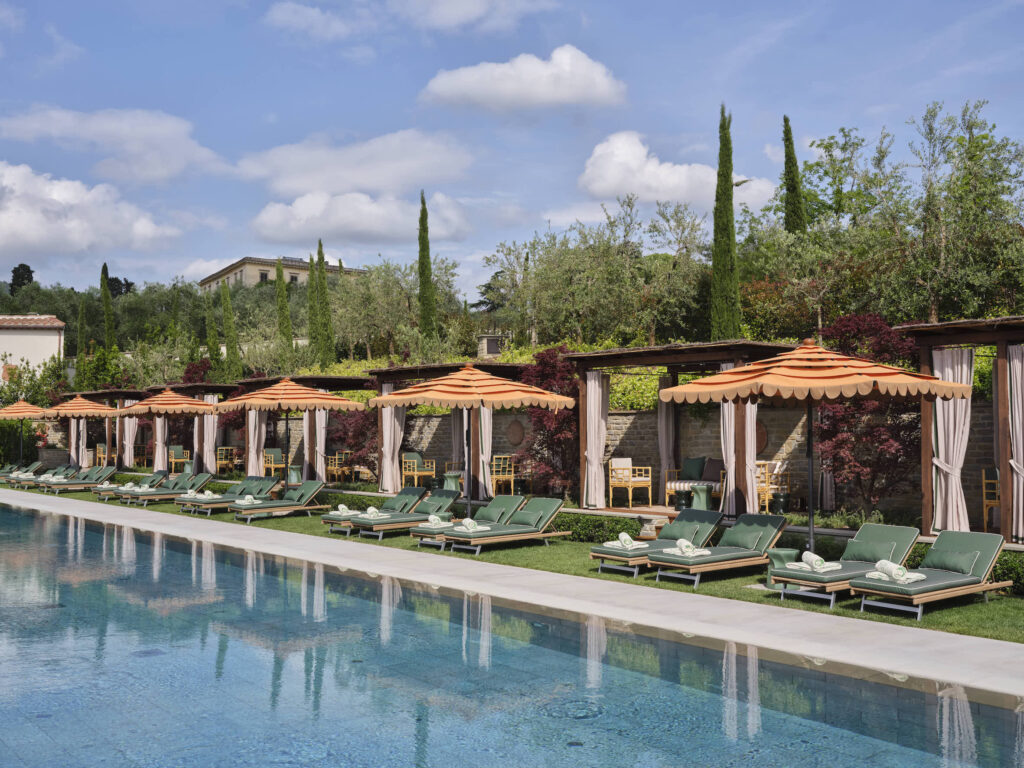
Meanwhile the hearty fare at La Gamella (reached via a 20-minute saunter through the aforementioned, art-and-artefact-packed Conservatorio) sees Tuscan culinary traditions merged with Head Chief Nicola Zamperetti’s favoured Sicilian cuisine: the results – from the charcoal-grilled yet succulent rock octopus with Tuscan bean cream to Mediterranean bluefin tuna tartare – are delectable during our visit. The same congenial space is the site of an afternoon tea experience, as well as the daily epicurean bonanza that is the breakfast buffet table à la carte menu. In the summer, pool bar Cafe Focolare is where to wash down crudos, paninos and pizzas with aperitif-style cocktails (or, for non-daytime drinkers, sparkling juices).
For serious pre-prandials, head to Bar Bertelli. It used to be the headmaster’s office, and now boasts a cocktail menu based on history and geography textbooks found during renovation. A “Canestrini”, for example, contains Ginarte (a dry gin distilled in Italy from wild juniper berries), Mancino Secco (a clear, dry Italian vermouth) and cherry yoghurt, and celebrates an Italian biologist and champion of Charles Darwin, Giovanni Canestrini (it “evolves with every sip”, quips the menu). Rare premium whiskies from around the world, including India, feature heavily elsewhere, and the cigar lounge next door is another major draw.
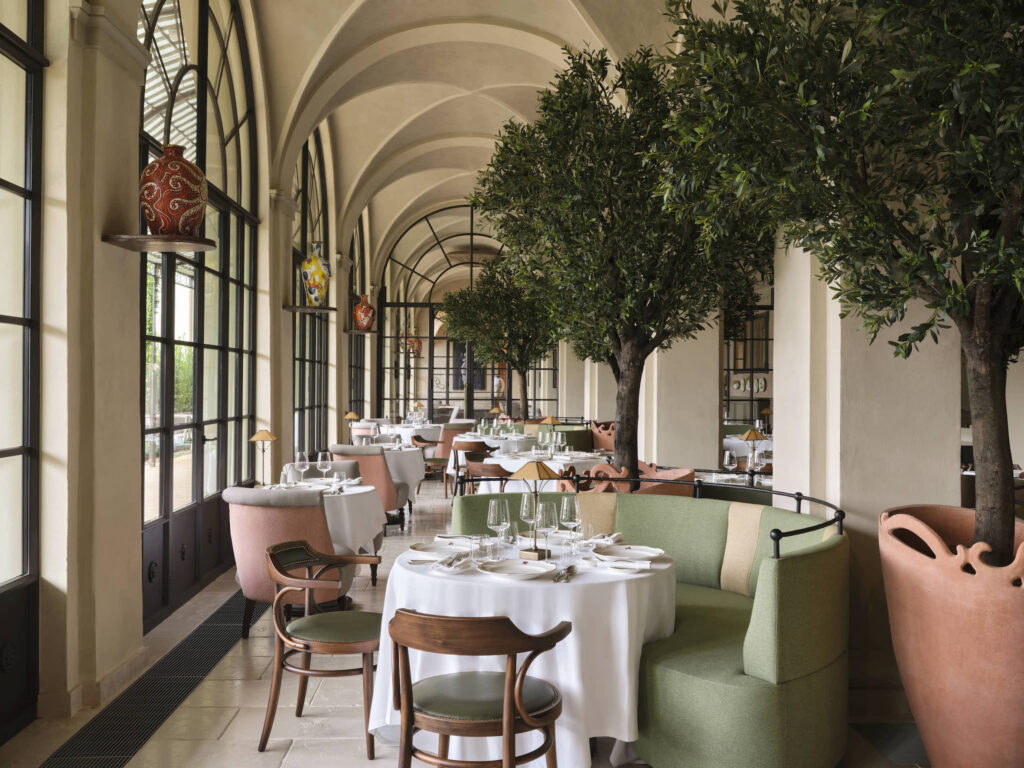
Another major draw, that is, of many. If a jaunt to the Cradle of The Renaissance is on your travel agenda – which it ought to be – and you prefer to be remote from the tourist throngs but still immersed in culinary and cultural enrichment, Collegio alla Querce is a true God-send, but still immersed in culinary and cultural enrichment, Collegio alla Querce is a true God-send.

